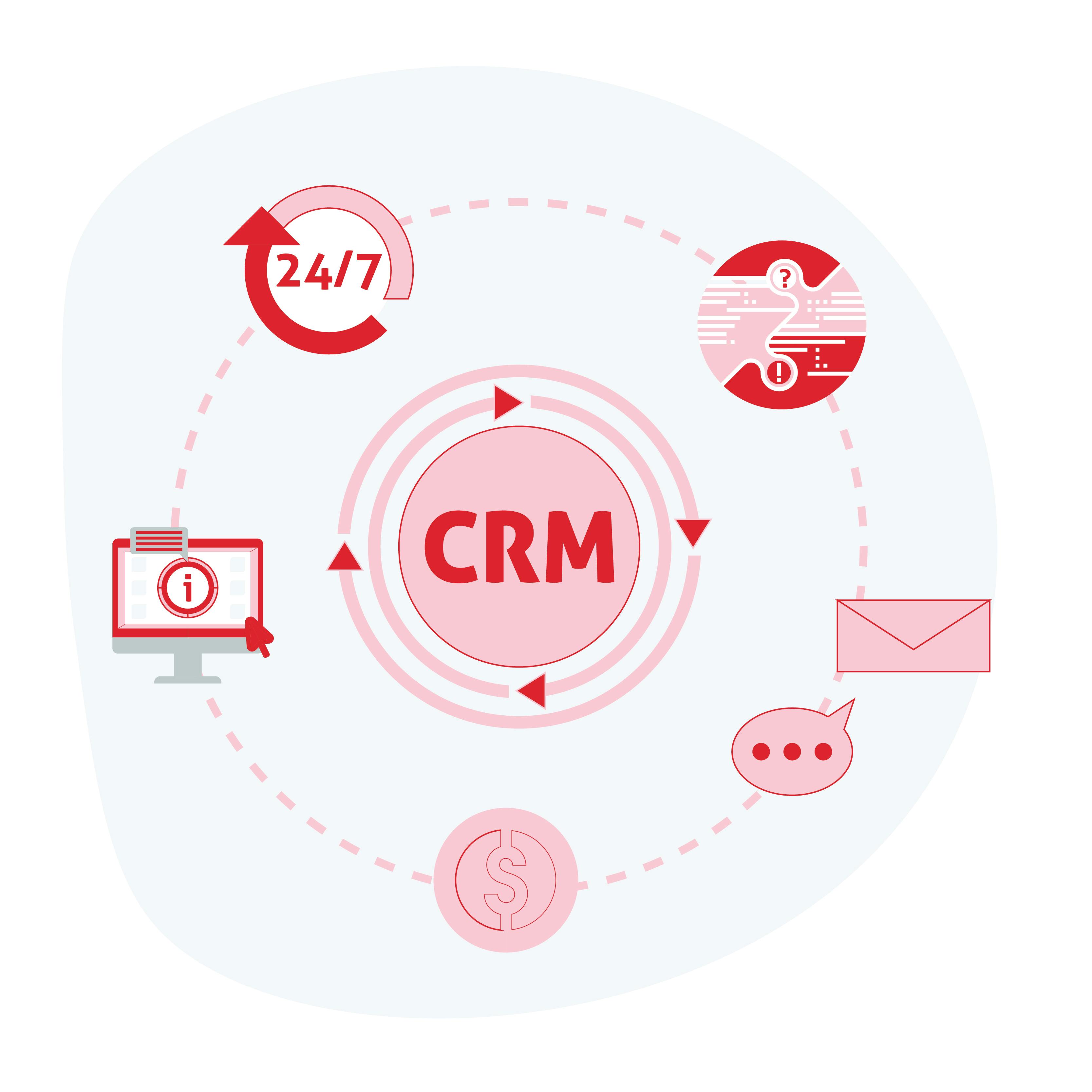Achieving Paramount Productivity Through Effective Relationships With Clients
Author

Date

Book a call
Ensuring effective client-vendor relationships is key for any business to formulate their partner’s visions into quality products. As it is commonly known, one satisfied customer brings in ten more while a contract gone wrong takes away ten customers. For this reason, it is integral to understand the customer’s needs to provide the best possible solution and this is where client relationship management comes in.
Why is it important to have effective relationships with clients?
Establishing a strong relationship with partners is of paramount importance as it helps a company to build strong associations with the client, which in turn helps to streamline business processes while boosting efficiency. Client relationship management is all about practicing efficient communication with partners to understand their business needs, so that effective plans can be formulated to execute the project.
A well-established CRM system helps you to organise and manage business processes throughout your lifecycle within individual elements of a transaction, which may include service users, suppliers as well as clients. It is crucial to ensure that this system is flawless as this affects overall business performance by guaranteeing that clients are satisfied with the deliverables which also helps to bring in more business in the long run. To ensure a truly unimpaired business model, it is critical for a business to thoroughly analyse the client relationship management processes and hire CRM managers who are excellent communicators capable of fostering productive relationships with clients.
What is the role of a client relationship manager at an app development organisation?
A client relationship manager is responsible for all communication with the client and acts as a bridge between partners and developers. It is the duty of a CRM manager to ensure effective cross-functional collaboration through expert project managerial skills. Through his process-focused approach, the CRM sets the seal on the project and ensures that the deliverables are up to the mark. Here are some of the various duties executed by the client relationship manager to ensure that the development process is fulfilling the criteria set by the partner whilst also meeting the company’s business requirements:
- A CRM acts as the liaison between the client partner and developers.
- It is the primary responsibility of a client relationship manager to understand the various requirements of the client and convey it to the development team.
- He/She also formulates the project plan and ensures that the development process is flowing accordingly.
- Checking in on clients throughout the various sprints set for the project to corroborate that they are satisfied with the progress.
- Perceive potential problems that the partner may be having and communicate with the management to find befitting solutions.
- Conduct constant research about competition and put together effective strategies to retain clients.
- Cooperate with the multiple departments involved in the project and formulate suitable strategies to make sure that the project is progressing according to plan.
- Present the client with documents such as contracts and invoices, while also setting mutually agreeable terms between the partner and organisation.

What is the CRM process followed at GeekyAnts?
We, as an organisation, believe in offering nothing but the best when it comes to our services and for this reason, we have efficient client relationships managers to work in tandem with our partners to offer optimum digital solutions. Now that you have examined the various ways in which a good CRM helps in improving client-vendor relationships, let's go into how we practice this to achieve perfection in the services we offer.
Onboarding of the client
The role of a client relationship manager kicks in as soon as the client is onboarded and he/she is in charge of managing and analysing the customer’s interactions and data with the main motive of bettering the relationship by developing strategies and techniques to ensure that the client is pleased with the correspondence. The first role that our client relationship managers encounter post the onboarding is ensuring that the Knowledge Transfer process is conducted seamlessly. The KT process is an extensive one that lasts for a period of upto two weeks where continuous interactions are held with the client to understand their requirements and the essential business documents (NSA, SOW, NDA and invoices) are drawn up based on mutually agreed terms. This is a recurring process which is held at regular intervals to ensure that the client is kept in loop regarding the development process. Subsequently, the responsibilities of the client relationships manager varies according to the engagement model chosen by the client.
Fixed Cost Model
In this particular case, the nature of the engagement is based on a fixed deadline where partners ask us to visualise their application idea which they have a rooted design plan. Here, the foremost duty of a client relationship manager is to ensure that the deliverables are meeting the deadline set by the customer. He/she is also responsible for setting practical sprints for the project to envision their application idea while ensuring that the relationship between the client and developers is satisfactory.
The client relationship manager also acts as the account manager who is incharge of re-engagement with the client. He/she is liable to the client to see that the finished product is up to par with the previously set requirements while also looking out for new ways to make the application better. For example, if a client approached us with the idea of a chat application, the client relationships manager is not only in charge of all communications with the client till the end of the engagement but also responsible for discovering new ways to make the product superior. He/She could suggest distinctive ideas to the client like adding various features to the application, i.e, video, bank transfers, etc. which would make it truly unique and stand out amongst other similar applications.
Time and Material Model
Similarly to the previous model, the client relationships manager is in charge of ensuring effective communication between the client and team regarding all the details concerning the project and the resources being allocated to it. As the client relationships manager is also responsible for ensuring the project is in order, along with formulating the right project strategy, he/she is also in charge of making sure that the right team is working on it. Projects following the T&M model at our organisation usually last for extensive periods of time, and it's the client relationship manager’s task to oversee customer satisfaction during this duration. This includes organising the team and effectively communicating with the client if the project requires extra resources along the various sprints.
Conclusion
An expert client relationship manager not only acts as the bridge between the client and the organisation but also help in expediting productivity through effective and well-organised communication. They build relationships with customers and build on it to ensure that their requirements are met whilst also working in tandem with the team to guarantee that the development phase is flowing smoothly. We live in an extremely competitive and commercial world and it goes without saying that client relationship managers play a massive role in retaining and augmenting the business of a company.
Dive deep into our research and insights. In our articles and blogs, we explore topics on design, how it relates to development, and impact of various trends to businesses.





